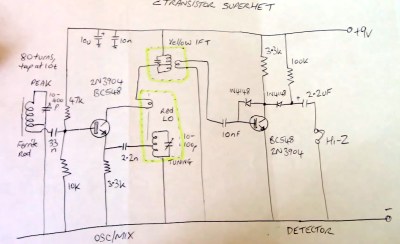Each year around the end of October we feature plenty of Halloween-related projects, usually involving plastic skeletons and LED lights, or other fun tech for decorations to amuse kids. It’s a highly commercialised festival of pretend horrors which our society is content to wallow in, but beyond the plastic ghosts and skeletons there’s both a history and a subculture of the supernatural and the paranormal which has its own technological quirks. We’re strictly in the realm of the science here at Hackaday so we’re not going to take you ghost hunting, but there’s still an interesting journey to be made through it all.
Today: Fun For Kids. Back Then: Serious Business

Halloween as we know it has its roots in All Hallows Eve, or the day before the remembrance festivals of All Saint’s Day and All Soul’s Day in European Christianity. Though it has adopted a Christian dressing, its many trappings are thought to have their origin in pagan traditions such as for those of us where this is being written, the Gaelic Samhain (pronounced something like “sow-ain”). The boundary between living and dead was thought to be particularly porous at this time of year, hence all the ghosts and other trappings of the season you’ll see today.
Growing up in a small English village as I did, is to be surrounded by the remnants of ancient belief. They survive from an earlier time hundreds of years ago when they were seen as very real indeed, as playground rhymes at the village school or hushed superstitions such as that it would be bad luck to walk around the churchyard in an anticlockwise manner.
As a small child they formed part of the thrills and mild terrors of discovering the world around me, but of course decades later when it was my job to mow the grass and trim the overhanging branches in the same churchyard it mattered little which direction I piloted the Billy Goat. I was definitely surrounded by the mortal remains of a millennium’s worth of my neighbours, but I never had any feeling that they were anything but at peace. Continue reading “The Time Of Year For Things That Go Bump In The Night”



















